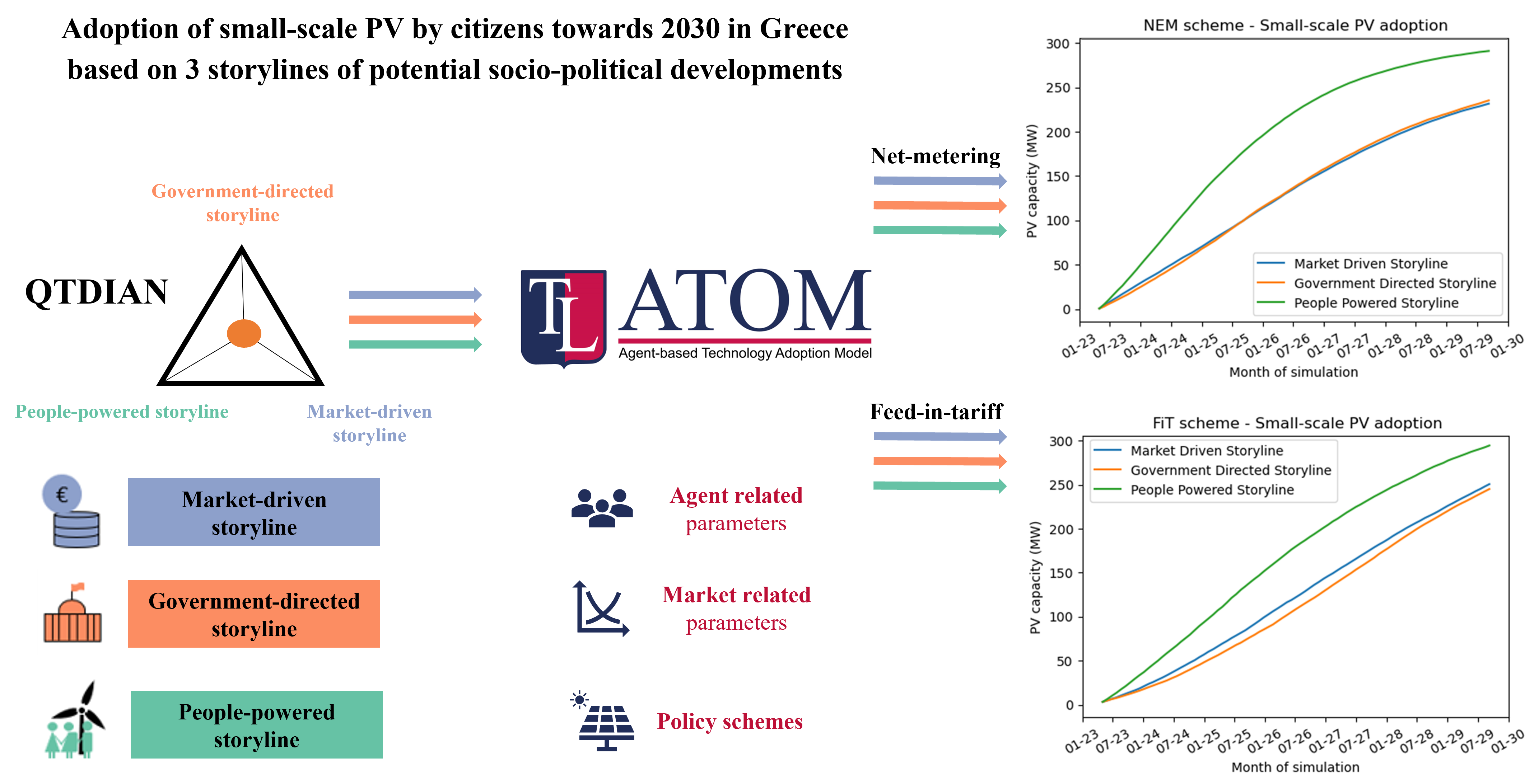
Recent policies, as the Renewable Energy Directive and the Energy Union Strategy emphasise the role of citizens as self-consumers (i.e., prosumers) and members of renewable energy communities to meet the European Union’s goal of providing “Clean Energy for All Europeans”. Furthermore, the “RePowerEU” strategy, which aims to disentangle Europe from Russian gas as soon as possible, while protecting citizens from painful and increasing energy price shocks, places a particular emphasis on rooftop solar PV installations on new buildings. On top of that, the “Renovation Wave Strategy” emphasises the need for an integrated approach combining on-site renewable solutions and rooftop solar in order to fully reap the potential of a renovation wave.
In this context, we explored the two following Research Questions (RQs):
RQ1: How could different socio-political developments impact the participation of citizens in the energy transition towards 2030 in Greece, through the adoption of small-scale PV systems under the currently available policy schemes?
RQ2: How could these socio-political developments influence the citizens’ behavioural uncertainty in terms of their decision-making and investment process?
Modelling outcomes showed that households’ behavioural aspects play a key role in the successful roll-out of small-scale PV investments in Greece and that fostering citizens’ participation in the energy system under a people-powered storyline leads to increased adoption rates and the least behavioural uncertainty related to the household’s decision-making process. They also showed that both schemes should be utilised to meet the 2030 target of 1GW of total small-scale PV capacity set by the latest version of the National Energy and Climate Plan, as the different features of each scheme may address different audiences of potential adopters.
Models used
QTDIAN
ATOM
Agent-based simulation model
DetailsSENTINEL case study
Case study: National – Greece
Country-specific case with focus on coal phase-out together with a large domestic renewable potential.
Details